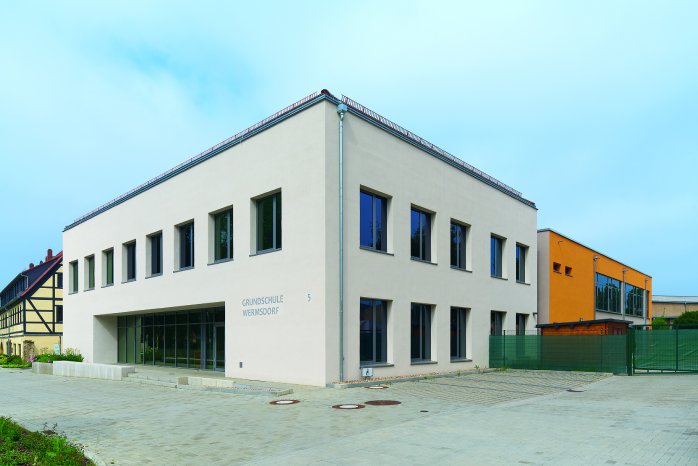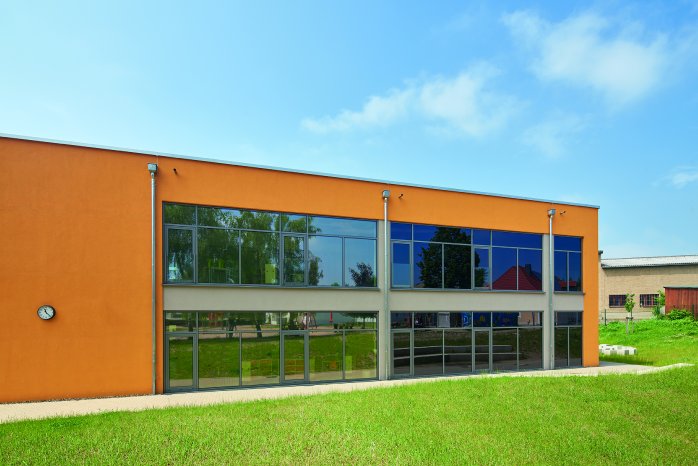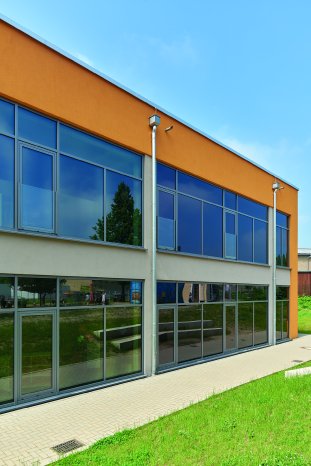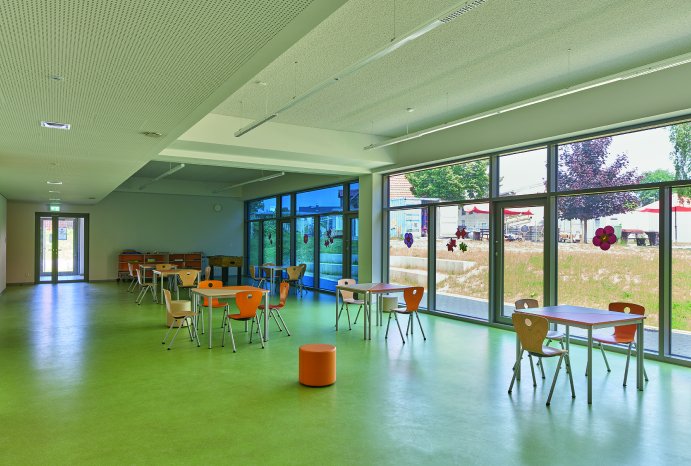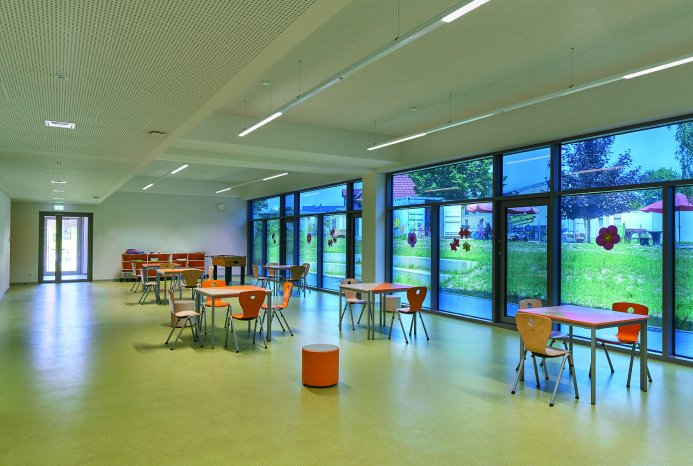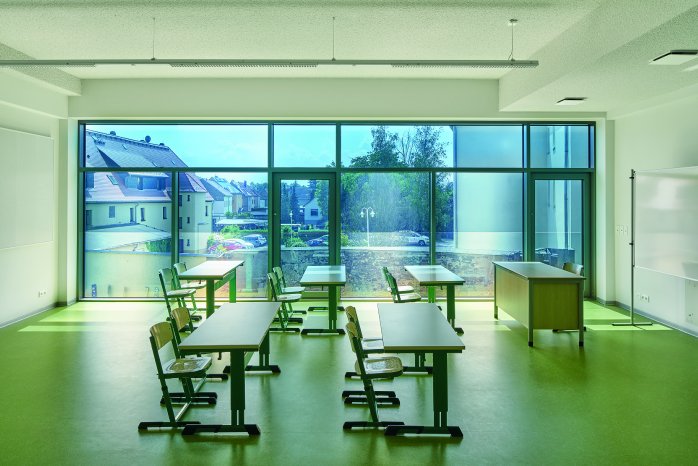Until very recently, pupils at Wermsdorf primary school still received their lessons in the former post office of the municipality, which has a population of 5000 people. They've now moved into the new school building next to the old one in the heart of the town. Designed as a zero-energy building, the newbuild uses state-of-the-art technology. Concrete core activation in the floors/ceilings heats and cools the building. A central ventilation system in combination with a heat pump and heat exchanger ensures that the rooms have a constant supply of fresh air at the right temperature. The roof has a photovoltaic system, which transfers any excess energy it produces in the summer months over to neighbouring buildings. Smart regulation technology synchronises all the components of the building management system.
A key part of the energy concept is the building's thermal insulation. To this end, the electrochromic, zoned SageGlass®, manufactured by Saint-Gobain, was fitted in highly thermally insulated Schüco aluminium façade, window and door systems (FWS 60.HI, AWS 90.SI+ and ADS 90.SI) and used in all of the building envelope's transparent areas. The glass can be switched electronically and automatically regulates the amount of daylight let into the building, protecting pupils and teachers against glare with its colour tinting. The sun shading works even in severe weather conditions, and you can still see outside without restriction, despite the shading. "We chose SageGlass® because it provides convenient sun shading and a pleasant indoor climate," explains project architect Sabine Schlicke. Her colleague Martin Fink adds, "Another benefit is the zoning of the panes. With this you can bring light into the room while protecting against glare."
Each window area is split into three zones, which can be controlled individually. Daylight brightens up the room through the top section, while the rest of the window is tinted to provide shading and protect pupils from glare while they work. The panes change their tinting level depending on the time of day, amount of light and indoor temperature. The automatic control system, which is connected to sensors on the façade, takes care of this. This means that the building's external appearance changes over the course of the day. The transition between the individual levels is smooth, without disturbing the teachers and pupils. In addition to automatic mode, the SageGlass® panes can also be operated manually by room, for example for those using a computer in their lesson.
The new school building was funded by the European Union's European Regional Development Fund (ERDF). This includes monitoring every two years. Leipzig University of Applied Sciences, which is responsible for carrying this out, is scheduled to publish the results at the end of the 2021/2022 school year.
